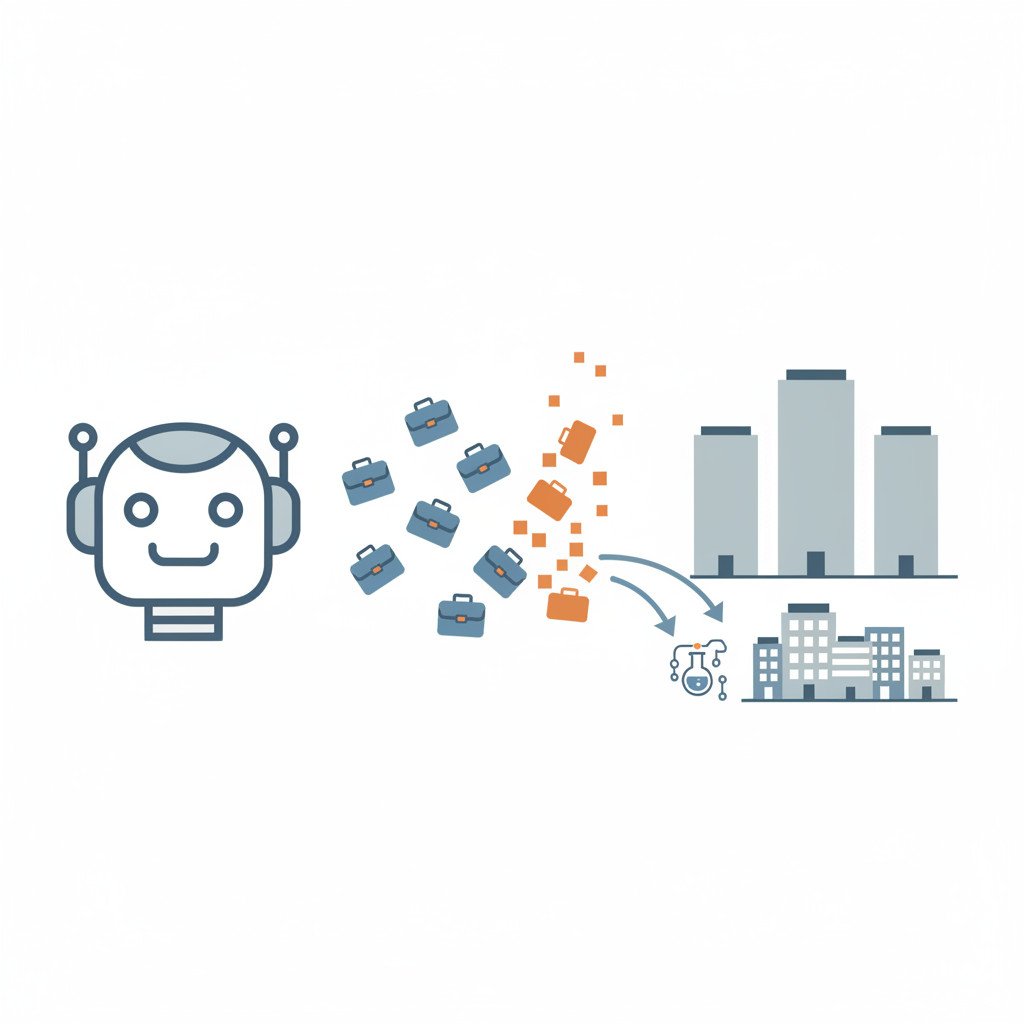Meta AI job cuts: what the move means for AI jobs and tech strategy
Meta AI job cuts have sent immediate ripples through the tech industry. Because the reductions target FAIR AI research and Superintelligence Labs, the change alters talent flow. As a result, hiring patterns will shift and competition for elite researchers will intensify. Many roles may move to product teams or other units, and severance packages may smooth transitions.
The cuts affect roughly 600 positions, and they come after a hiring spree and a recent pause. However, Meta says TBD Lab will remain spared and it will still recruit selectively. Therefore, the company aims to become leaner and more decision focused. In short, this restructuring will reshape the AI job market, influence startup hiring, and signal broader tech trends.
Moreover, competitors may accelerate poaching and startups could gain talent. Because investors watch costs closely, funding patterns may change. Therefore, teams and job seekers must adapt quickly to shifting priorities.

Why Meta AI job cuts happened
Meta AI job cuts reflect strategy and cost signals. First, leadership wants fewer layers. As Alexandr Wang wrote, “By reducing the size of our team, fewer conversations will be required to make a decision, and each person will be more load-bearing and have more scope and impact.” Read more here.
Second, executives worried about output. Mark Zuckerberg flagged that some AI efforts were not producing breakthroughs after Llama 4. As a result, Meta moved from hiring spree to containment. The company paused hiring in August 2025 and cut about 600 roles in FAIR and Superintelligence Labs. Learn more about the cuts.
Impact on employees and industry
- Immediate effects: Affected staff get 16 weeks severance plus two weeks per service year. Many can apply for internal roles. This softens transitions, but uncertainty remains.
- Talent flow: Top researchers may join startups or competitors. Meta previously poached more than 50 researchers from rivals. Therefore, hiring markets will shift.
- Strategic signal: The cuts may prompt startups to accelerate hiring. For hardware and data centre plans, see our piece on NVIDIA Spectrum-X.
- Policy context: The moves echo the broader US AI playbook and competition for talent. For more, read this article.
Overall, the restructuring realigns resources. However, it also reshapes where AI expertise lands. Therefore, teams, investors and job seekers must adapt quickly.
| Company | Approx scale of AI cuts | Affected departments | Timeline | Notes |
|---|---|---|---|---|
| Meta | About 600 roles | FAIR AI research; product AI; Superintelligence Labs infrastructure | October 2025 | TBD Lab spared. Affected employees receive 16 weeks severance plus two weeks per year of service. |
| Companywide 12,000 layoffs in 2023; AI-specific numbers not disclosed | Reorgs and role reductions in some AI product teams | 2023, rolling changes | Alphabet emphasized efficiency after broad restructuring. | |
| Microsoft | Companywide 10,000 layoffs in 2023; AI-specific figures not public | Some AI and cloud teams affected through reorganizations | 2023–2024 | Continued investment in Azure and AI while trimming other roles. |
| Amazon | Companywide 27,000 layoffs in 2023; AI-specific figures limited | Some machine learning and product groups affected | 2023, with ongoing reviews | Focus on cost cuts across cloud and retail divisions. |
Meta AI job cuts and the wider industry impact
Meta AI job cuts shift incentives across the AI ecosystem. Because Meta trimmed roughly 600 roles in FAIR and Superintelligence Labs, talent supply will change. Therefore, startups and rivals may see new hiring opportunities. As a result, recruiters will target displaced researchers and engineers.
Immediate market shifts
- Talent redistribution: Top researchers may join startups, universities, or competitors. This will alter where expertise concentrates.
- Funding and hiring: Venture firms might accelerate investments in small AI teams. For context on infrastructure pressure, read here.
- Contracting and focus: Companies may favor productized AI work over long tail research. Consequently, research priorities could narrow.
Strategic adaptation by firms
- Lean core teams: Firms will adopt smaller, high-impact squads. Alexandr Wang framed cuts as a way to reduce bureaucracy and speed decisions.
- Infrastructure bets: Some firms will double down on data centre and GPU stacks, while others outsource. For national strategy context, see here.
- Talent strategies: Expect more targeted signing bonuses and retention offers.
What it means for job seekers
- Upskill quickly: Learn production ML and model deployment skills. This increases employability across industries.
- Network broadly: Engage with startups and research labs. Moreover, open source contributions will showcase capability.
- Negotiate actively: Leverage severance and hiring windows to find the right fit.
Overall, these cuts reshape innovation pathways. However, the AI field remains resilient and adaptable, and opportunities will follow shifts in strategy and capital.
Conclusion
Meta AI job cuts mark a clear shift in how major tech firms balance research ambition and operational focus. In this case, Meta reduced roughly 600 roles in FAIR and Superintelligence Labs. As a result, the company aims to speed decision making and concentrate resources on core, high impact work.
Looking ahead, the job market will likely rebalance. Startups and rivals can gain elite talent quickly. Therefore, expect faster hiring cycles for focused product teams and more competition for production ML skills. However, long term research will remain vital in universities and specialized labs.
For job seekers, the moment calls for practical skills and adaptability. Upskill in model deployment, data engineering, and applied research. Moreover, build a public portfolio and network across academia and startups. Employers should design lean teams that preserve deep expertise while improving speed.
EMP0 supports businesses navigating these shifts with AI driven automation and growth tools. For more about EMP0 visit EMP0 and the EMP0 blog. You can also explore automation workflows at n8n.io. Stay strategic and focus on impact as the AI landscape evolves.
Frequently Asked Questions (FAQs)
Meta AI job cuts — quick overview
What exactly happened at Meta?
Meta cut about 600 positions from its AI division. These losses hit FAIR research, product AI, and Superintelligence Labs infrastructure. TBD Lab was spared. Affected staff receive 16 weeks severance plus two weeks per year of service.
Why did Meta make these cuts?
Leadership wanted to reduce bureaucracy and speed decisions. Alexandr Wang described the move as creating a leaner, more load bearing team. Moreover, executives signalled concern that some AI efforts were not yielding expected breakthroughs.
How will this affect the AI job market?
Talent will redistribute quickly. Therefore, startups and rivals may hire elite researchers. As a result, production ML and deployment skills will become more valuable than pure research alone.
Should affected employees expect support or rehiring opportunities?
Yes. Meta encourages internal applications and offers severance to ease transitions. However, competition for in house roles will be selective and timing matters.
What should job seekers and hiring managers do now?
Job seekers should upskill in model deployment and data engineering. Network actively and build a public portfolio. Hiring managers should form small, high impact teams and focus on measurable outcomes.
These FAQs aim to clarify causes and outcomes. They also suggest practical next steps for people and firms navigating the shift.

